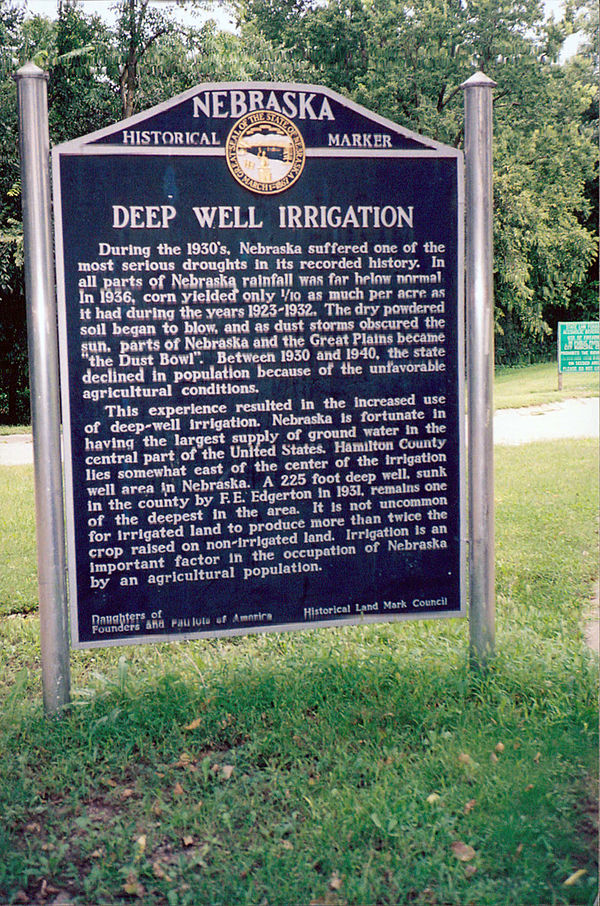Our Historical Markers across Nebraska highlight fascinating moments and places in our state’s past. When the Dust Bowl hit the midwest, one of the things that helped some Nebraskans pull through was the increased use of deep well irrigation techniques.

Location
1201-1299 Q St, Aurora, Hamilton County, Nebraska
Marker Text
During the 1930’s, Nebraska suffered one of the most serious droughts in its recorded history. In all parts of Nebraska rainfall was far below normal. In 1936, corn yielded only 1/10 as much per acre as it had during the years 1923-1932. The dry powdered soil began to blow, and as dust storms obscured the sun, parts of Nebraska and the Great Plains became “the Dust Bowl.” Between 1930 and 1940, the state declined in population because of the unfavorable agricultural conditions. This experience resulted in the increased use of deep-well irrigation. Nebraska is fortunate in having the largest supply of groundwater in the central part of the United States. Hamilton County lies somewhat east of the center of the irrigation well area in Nebraska. A 225 foot deep well, sunk in the county by F. E. Edgerton in 1931, remains one of the deepest in the area. It is not uncommon for irrigated land to produce more than twice the crop raised on non-irrigated land. Irrigation is an important factor in the occupation of Nebraska by an agricultural population.



